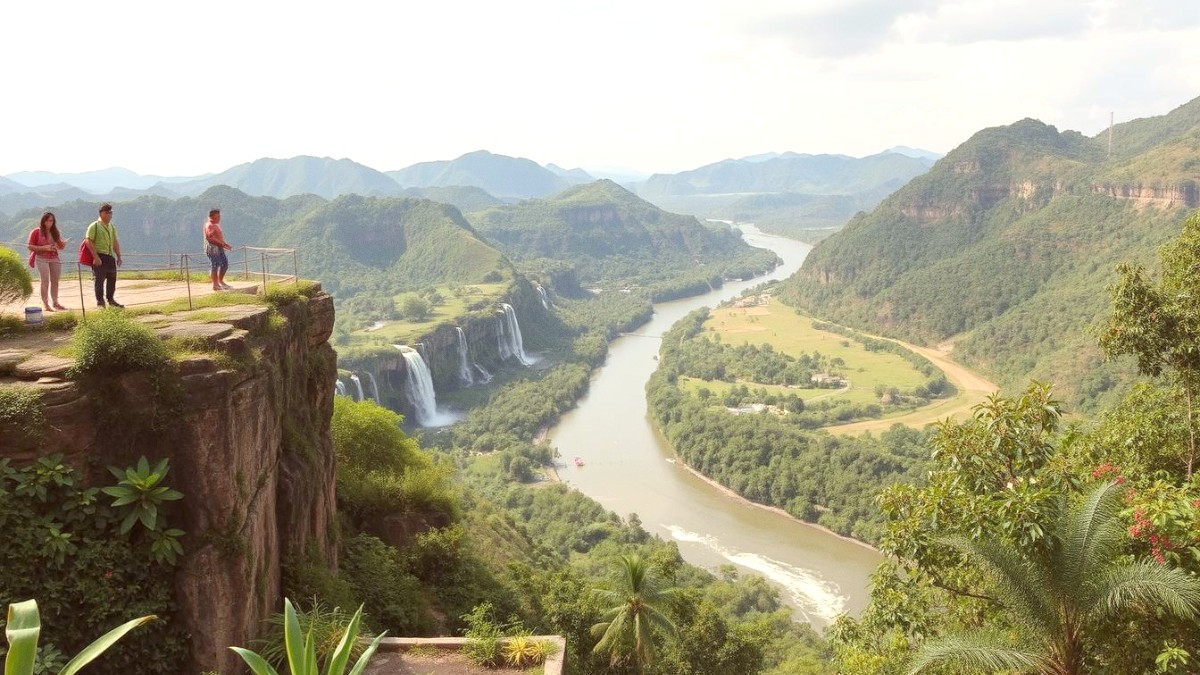
Southern Laos, Laos
Wat Phou Champasak a ruined Khmer Hindu temple complex. Dating back to the 5th-13th centuries, it predates Cambodia's famous Angkor Wat.
Originally dedicated to the Hindu deity Shiva, it later adapted for Buddhist use, representing spiritual and political connections between early Khmer kingdoms and the Mekong region. A UNESCO World Heritage site.
A relatively modern construction offering spiritual significance.
Wat Phou Champasak is the main archaeological site with extensive Khmer ruins.
Pakse retains charming French colonial buildings, notably along the riverside.
Wat Luang (largest temple, monastic school) and Wat Phabat (Buddha footprint) are important Buddhist centers.
No specific memorial sites highlighted as major tourist attractions.
Explore older parts of the city center for architectural heritage.
Southern Laos, known for lush landscapes, has stunning natural wonders. Pakse a launchpad.
A small public park near the Sedone River, popular for evening strolls.
High-altitude region with stunning waterfalls (Tad Fane, Tad Gneuang, Tad Lo, Tad Hang, Tad Yuang).
No dedicated wildlife viewing areas. Irrawaddy dolphins in Si Phan Don rarely seen.
Bolaven Plateau formed by an ancient volcano, ideal for coffee and tea cultivation.
Defines Pakse. Boat trips offer a different perspective of the city.
Unique riverine archipelago south of Pakse, known for laid-back lifestyle and river scenery.
Charming town across the Mekong from Pakse, tranquil riverside vibe.
Tranquil island near Champasak town, community-based homestays, rural life.
Smaller, local temples offer glimpses into daily religious life without tourist crowds.
Capture memorable images of Pakse's diverse landscapes and cultural sites.
Pakse offers diverse attractions from ancient temples to natural wonders.
Consider hiring a local guide for deeper insights into the region's rich heritage and natural beauty. Find activities on GetYourGuide.
A small, charming town directly across the Mekong River from Pakse. It the main base for visiting Wat Phou.
The northern parts of the Bolaven Plateau loop, beyond the most famous waterfalls, offer a more authentic experience.
Located south of Pakse, this is an unique riverine archipelago within the Mekong. During the dry season, the Mekong spreads out.
Pakse offers a pleasant green space, popular with locals for evening strolls and social gatherings.
Beyond the main attractions, Pakse and its region hold quieter, less-trafficked spots.
A small, charming town located directly across the Mekong River from Pakse (accessible by a short ferry ride). It the main base for visiting Wat Phou.
A tranquil island located near Champasak town, accessible by a short boat ride. It community-based homestays.
The northern parts of the Bolaven Plateau loop, beyond the most famous waterfalls, offer a more authentic and less touristy experience.
These areas not set up for mass tourism.
Many smaller, local temples within Pakse or in the surrounding villages offer a glimpse into daily religious life.
These spots rarely visited by tourists.
Capture stunning images of Pakse's landscapes and cultural sites.
Wat Phou intricate details and harmony with nature.
Morning visits to temples and outdoor sites for cooler temperatures.
Tuk-tuks or rented motorbikes are common for local travel and day trips.
Sunscreen, hat, water, and comfortable walking shoes for explorations.